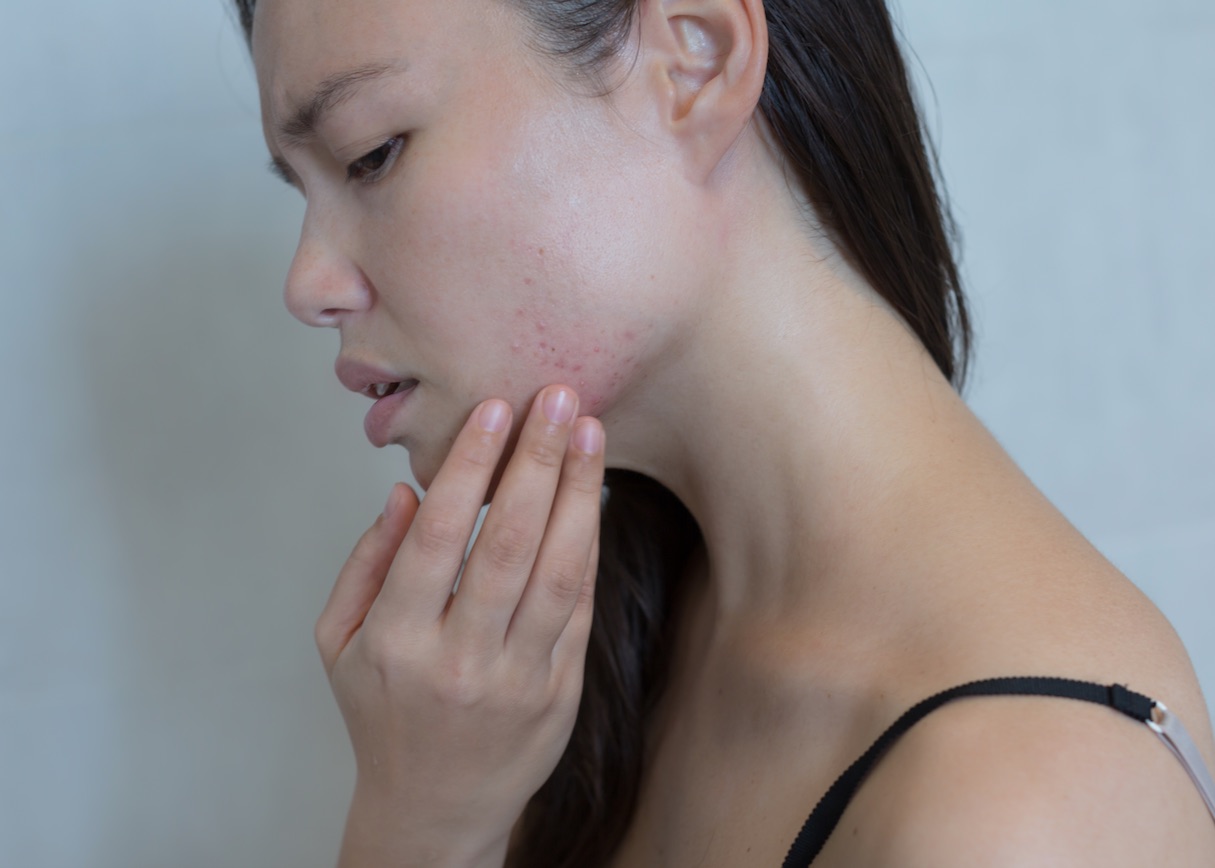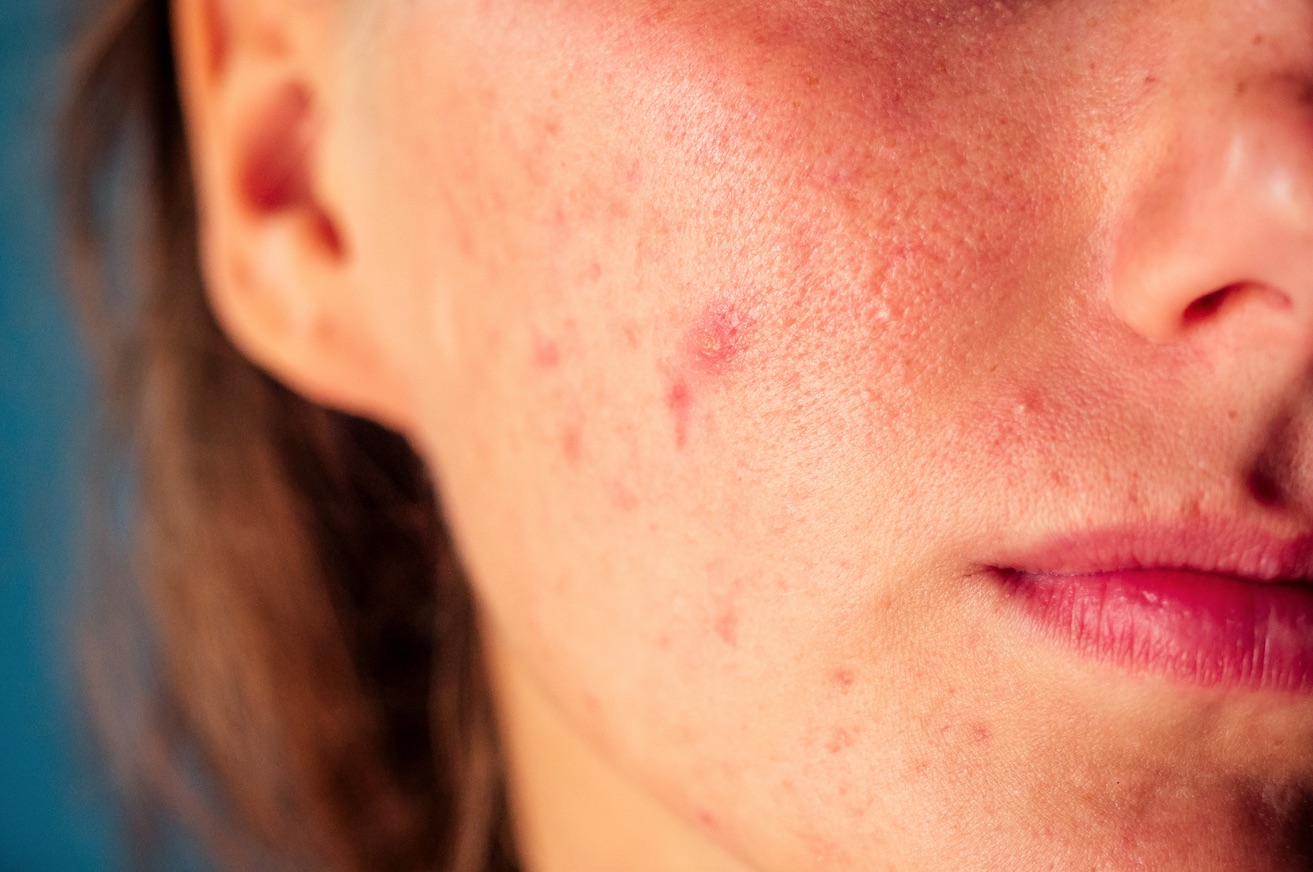Despite movements focused on making post-acne hyperpigmentation and scarring less “taboo”, the physical and mental marks left by the inflammatory skin condition are still a big concern for Brits.
Research collated from sources including the Happiness Research Institute and the British Journal of Dermatology has shown the impact acne can have on an adult’s quality of life, with 44% of people with the condition now suffering with at least one mental health condition.
So, it’s easy to understand clients’ frustrations when they think they’ve reached the finish line of their skin health marathon, getting those pesky acne symptoms under control, to then be presented with the long-lasting after effects of the breakout – stubborn red marks, discolouration and scars.
“The number of clients I’ve seen who tell me they’ve been everywhere and tried everything, and that doctors and skin therapists have told them they might just have to live with it, is astonishing,” says Pamela Marshall, clinical aesthetician and co-founder of Mortar & Milk in Fulham, London. “[The industry] needs to be doing more.”
One of the biggest challenges for salons and spas is building trust with clients who may struggle to open up, having grown up in a social media-dominated world obsessed with “perfection”.
The starting point is educating clients on the causes and differences between post-inflammatory hyperpigmentation and acne scars, and how these conditions can be managed with treatment approaches from a trusted professional.
What causes post-acne hyperpigmentation?

One of the biggest misconceptions you might face is clients thinking hyperpigmentation is the same as a scar.
“Hyperpigmentation of the skin as a result of acne is often confused with acne scarring,” comments Dr Malvina Cunningham, consultant dermatologist and member of personalised skincare brand Skin + Me’s expert dermatology team. “They are actually very different as hyperpigmentation is defined as colour change only without any structural changes to the skin, although scarring and hyperpigmentation can of course coexist.”
Marshall says, “When the skin is wounded, with an acne spot for example, it inflames and triggers melanocyte production, which can lead to excessive melanin coming to the surface, causing those dark or red marks.”
Marshall explains that melanin can also spread to the surrounding area near the injury, meaning it doesn’t matter how small or inconsequential the spot is, it has the potential to leave behind a larger mark after the infection has cleared, which could linger for weeks, months or, in some cases, even years.
It’s also important to know that darker Fitzpatrick skin types have a higher propensity for increased melanin production when wounded, which means post-acne hyperpigmentation is much more common in clients of colour.
“We all have a similar amount of melanin but in darker skin tones the melanocyte cells are bigger and more active, which is why these clients will hyperpigment more as a result,” says Dija Ayodele, founder of Black Skin Directory, an online resource connecting women of colour to expert skincare professionals in the UK.
How can it be treated?
The good news for clients is that post-acne hyperpigmentation can naturally fade over time, but how quickly varies person-to-person. A treatment and homecare routine that helps them achieve skin health will aid the process, using the right ingredients to boost cell turnover without causing excessive inflammation or damage to the skin’s barrier function.
However, advanced facialist, Mariam Abbas, notes that treating post-acne pigmentation and scarring can be more of a challenge than treating the acne itself, as clients are often asking for the wrong treatments or products.
She explains, "Acne scarring and pigmentation are often emotionally distressing because they are so difficult to treat, and there can be a considerable amount of guilt associated with post inflammatory hyperpigmentation.
"When acne treatment has cleared up the spots, if the skin doesn’t look clear and smooth (due to the scars) individuals often tend to continue treating their skin like acneic skin. I have had many clients approach me for acne treatment where the acne is long gone but the uneven skin texture has caused them to think they still have acne."
Cunningham adds, “Any treatment that targets pigmentation should be used alongside an effective acne treatment to prevent further changes. Azelaic acid can be a great treatment for post-inflammatory hyperpigmentation.
Usually well tolerated, it also works for acne so can be combined with other topical acne treatments such as retinoids, if they are tolerated. If topical treatment has failed chemical peels can be effective, but these are associated with greater downtime.”
“In clinic, we often start with a lower pH peel and give clients products to use at home to increase skin hydration and barrier function, then we move on to microneedling, which is excellent for forcing skin to remodel itself by building new collagen and elastin,” says Marshall. “I also tell clients not to use AHAs more than once or twice a week because used too often they can interfere with a healthy skin barrier function, causing inflammation.”
Niacinamide and certain mushroom extracts are also good at reducing pigment, while vitamin C is cited as another wonder ingredient, “as it’s a natural way to fade red and dark marks and rejuvenate skin’s clarity,” explains Dr Howard Murad, founder of the eponymous brand.
“Retinol can also help stimulate cell renewal and improve texture.” Using sunscreen daily is also crucial because UVA and UVB rays can make discolouration of hyperpigmentation much worse.
All the experts recommend taking photos of your client at every step of their treatment journey, which you can show them if they’re feeling disheartened with the speed of the results. “Clients look at themselves in the mirror every day, so they don’t always take into account the changes that are occurring,” adds Ayodele.
“Having these photos in your arsenal means you can show them exactly how much they’ve progressed, while explaining that if the condition took X amount of time to form then it will take time to clear. It’s about managing expectations. Don’t promise flawlessness, promise to improve the appearance of their condition.”
What causes acne scarring?

Adult acne can also leave scars, which most commonly occur when the serious types of spots (nodules and cysts) burst and damage the nearby skin.
Cunningham explains, “Nodular acne can be identified as hard and painful acne deep under the skin. They generally do not develop a white head and will often remain under the skin and are firm. Cystic acne resembles boils, is generally very painful to the touch and can be filled with pus.”
“A scar refers to a dent or change in the skin structure due to loss or excess accumulation of the skin’s scaffolding proteins after severe inflammation from a healing breakout,” says Candice Gardner, education manager for skincare brand Dermalogica.
Advanced facial aesthetics doctor Dr Ahmed El Muntasar adds, “A lot of scars form because of trauma to the surface of the skin and deformulation of adhesions, which show these little bands under the skin that pull the skin in, and loss of the natural collagen and elastin in the skin.”
Acne scars also come in different types, with the most common being ice pick, which appear as small, deep holes that look like the skin has been punctured with a sharp object; boxcar, round or oval depressions or craters; and rolling, caused by bands of scar tissue that form under the skin, giving it an uneven, “rolling” appearance.
“People with bad acne scars can feel very self-conscious and often end up going to great lengths to hide them. The situation can be made worse if that person feels like they are being stared at,” says Esther Fieldgrass, founder of clinic chain EF Medispa. “Therefore, you need to communicate a realistic outcome to the client, which you always aim, but can never promise, to exceed.”
How can it be treated?
Fieldgrass recommends microneedling, derma stamp, laser and specialised peels as effective scar treatments to help to rebuild the dermal scaffolding and plump out the skin, but warns to be mindful of the client’s skin type and medical history, including contraindications like keloid scarring.
Marshall agrees a cautious approach is best. “For boxcar scarring, for example, I use microneedling infused with hyaluronic acid and then let it heal for at least six weeks, putting the long-term health of the skin above anything else,” she says. However, if the scar is a particularly deep, textural one then it may be worth referring the client to a specialist.
“It’s about getting the best outcome for your client. I sometimes do referrals to dermatologists who can inject in and around those scars with fillers to plump up the skin and give a smoother canvas, so to speak. I think knowing when to refer makes you a better therapist,” adds Ayodele.
Cunningham says, “Topical steroids, silicone gels, steroid injections and radiotherapy are all options for hypertrophic or keloid scars and need to be done under the supervision of a dermatologist.”
Vitamin A taken orally, topically and in treatment can also help reduce scarring, explains Tracy Tamaris, director of education at the International Institute for Anti-Ageing (IIAA), which distributes skincare brand Environ. “Skin that is vitamin A-deprived will become less active and damage to DNA will not be repaired, which means melanin distribution will be irregular and collagen and elastin production will decline with poor-quality production.”
The success of the client’s skin journey will rely on their homecare and lifestyle choices as much as the in-salon treatments. “One way to deal with acne scars is to help prevent their appearance in the first place – clients need to know that picking at the skin leads to scars and that sun exposure can aggravate them,” says Murad.
When advertising your services, use a selection of before-and-after photos on different types of acne scarring so people can see “real” results. “It’s [about] not letting the condition affect the [client’s] confidence or self-worth,” explains Murad.
It’s important to manage client’s expectations of treatment, though. “Scar treatment can be difficult, and it takes time to improve it. Not every method works for everyone and sometimes methods need to be not only combined but also repeated. The end results are variable and it's important to realise treatment is not perfect. Although it can significantly improve, skin will not revert to the way it looked before breakouts,” says Cunningham.
Abbas agrees, adding stating that "There are many options to help with scarring, and treatments are becoming more sophisticated and effective, however, the most important aspect is managing client expectations."
She prefers to comine treatments for best results, alternating laser with microneedling (and sometime rafiofrequency), for her clients. However, Abbas reccomends that, "Raised hypertrophic scars and keloid scars are best treated in medical clinics."

![How to reduce post-acne pigmentation and scarring [Updated]](https://d3sc42dkmius1e.cloudfront.net/Upload/669/CMS/News/Photos/a56c670c-ef2.jpg)


